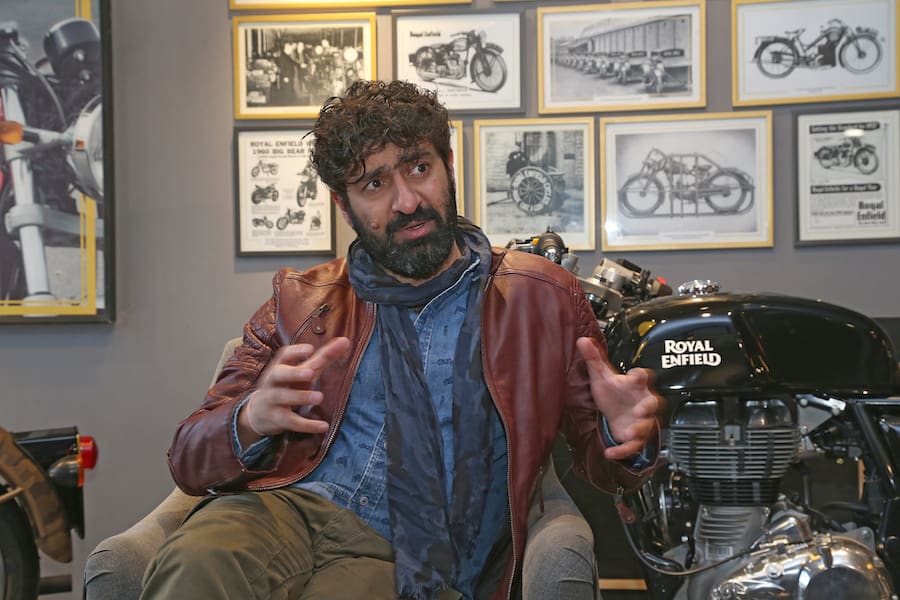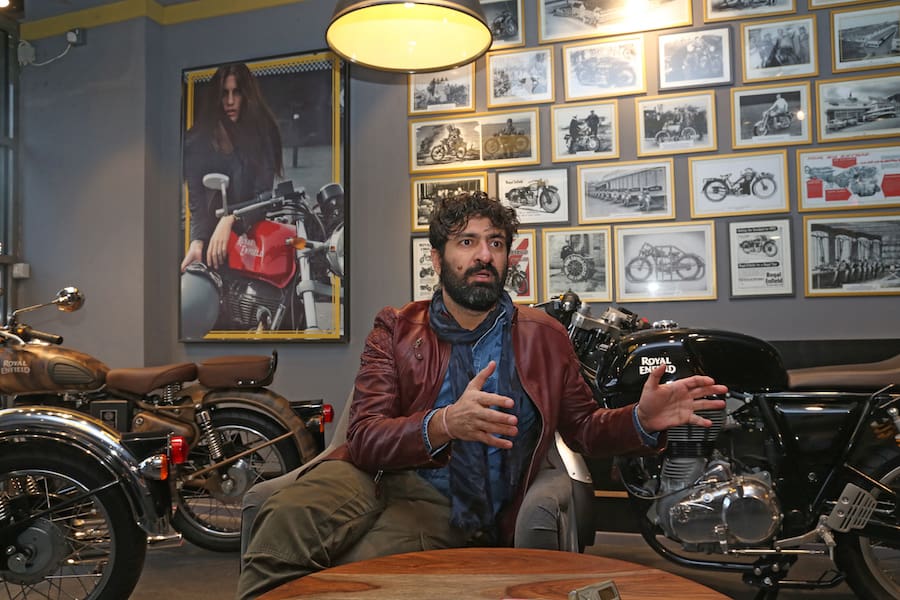Sid says…
Now that figure is up to 825,000, and Eicher Group stock has increased in value 70 times over under his leadership. We asked Lal about the new bikes, and the company’s plans
Why did you limit the new bikes at 650cc?
Why not make them 750?
We wanted to make a motorcycle that was accessible to our Indian emerging market audience, which they would feel is a step up – a big step up by their standards – from what they’ve currently got, whether it’s a Royal Enfield or another motorcycle. Yet it needs to be accessible, too. Sometimes too much power in a country like India is too much to handle, and then you also compromise on fuel efficiency, on maintenance costs, on the price of the motorcycle, all of that. So on one hand we wanted to make it accessible, but on the other hand we wanted to make sure that it is super appealing in markets like the UK, USA, Australia and so on. It will hold its own easily, I think.
Also, we don’t like being in competition – we prefer to build a space where there are very few other companies, other products, or where there’s a very different market. So what I see right now is in Europe and America the 800cc market is very crowded, but there’s not that much one step below that. And honestly, when you eventually get to ride our motorcycle you’ll see it’s not compromised at all on that front. Okay, maybe it still doesn’t have super top-end performance, but all the way up to the 100mph level it does the job better than any other.

You’ve said that you don’t want to make anything smaller than 250cc, or bigger than 750cc. Can we assume then that there will be a 750 version of this engine?
Not at all – it just sets the outer limit, that doesn’t set our ambition. So we’re not making any 250 or 750, we’re actually restricting ourselves, by our own needs, between 350 and 650 right now.
The new bikes have OHC engines. Did you ever consider making a pushrod version as an extrapolation of your existing singles?
I was reasonably certain from the start that we had to go to an overhead cam engine. We don’t do things specifically for historic reasons, but more for character, and to be appropriate for the times. We didn’t think pushrods gave us any real benefit, except for a nostalgic one – these days the technology has moved on. We have also taken the revs up and we do 7500rpm or so. At that point pushrods start becoming a bit more of a burden than an OHC motor. So yes, we’ve had to move on in engine technology, and we’re happy to do so.
Your third factory is now producing bikes. What is your eventual monthly or annual capacity going to be?
It’s kept on going up, and we’re making 70,000 bikes a month. We’ve got ample capacity, so by the end of this year it will be 825,000 per year. And if you extrapolate, we’ll be going beyond 70,000, more like 75,000-plus, even up to 80,000-plus monthly. So yes, eventually we could cross 80,000 units a month by 2019 with the current facilities including assembly, paint job, engine, and supplier capacity. We don’t want to put a cap on production – there’s no reason to. All these huge numbers we’re talking about, we’re still just six per cent of the Indian motorcycle market.

How about international markets?
We’re now only at the start of our international efforts, and it’ll take time – but we’re proceeding well. It’s not just America, we’re doing well in the UK, we’re doing really well in France right now, for some reason the French love Royal Enfields. We’re building distribution, building a brand that businesses can trust. So dealers can trust us that we will do the right thing, we’re there for the long term, we will support them. Not just in parts, and service and motorcycles, but also in building the brand and bringing customers in, understanding the market. So we’ve been doing that for many years, and that entire foundation now will help us in selling our twins. Because without that we’re nothing.
How do you feel about Mahindra buying BSA – is it very high on your list of concerns?
You know, we don’t take any competitor lightly. We keep an eye out for everybody, but we make sure we do things very differently.
Does it appear to you that Royal Enfield’s been successful with a particular kind of very individual product, and that Mahindra effectively said, “Well, our idea of competing with Hero and Bajaj didn’t work, so let’s try
and get some of Royal Enfield’s market.”
As you know, me-too strategies rarely work. People have tried unsuccessfully to copy big American motorcycles for decades now, and it’s not that easy.

Is it true that you were interested in acquiring Ducati, and that you made an offer for it, as has been rumoured?
A company like ours must always keep our eyes and ears open for opportunities. That’s all I’ll say about the company you mentioned. But we have, I believe, such a strong business, with a huge future ahead of us, I wouldn’t want to distract ourselves from that. On the other hand we’re not an ostrich, either – we don’t want to keep our head in the ground and say, “Look, this is the only thing we do.” We have to keep looking around, seeing what’s out there, and make sure that we address different opportunities as they arise. There’s huge, monumental shifts going on in the world motorcycle industry landscape today. I mean there’s electrification, there’s connectivity, there’s cities just bursting at the seams. That’s going to change the demands for mobility a lot. And we’re not going to ignore that – we’re working on those things as well.

Are you looking at electric motorcycles?
Yes, we are looking at it, but it will always be with a totally different lens. Of course, there’s always the opportunity to take an electric powertrain and stick it into a conventional motorcycle, like the car guys do, but I don’t think that’s the future. I think you have to look at the opportunity very differently, and Royal Enfield will always be unique, and unconventional, and try to approach it as consumer-led rather than technology-led.












